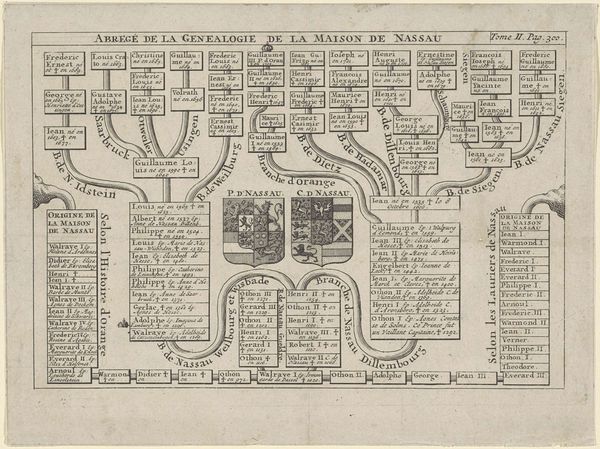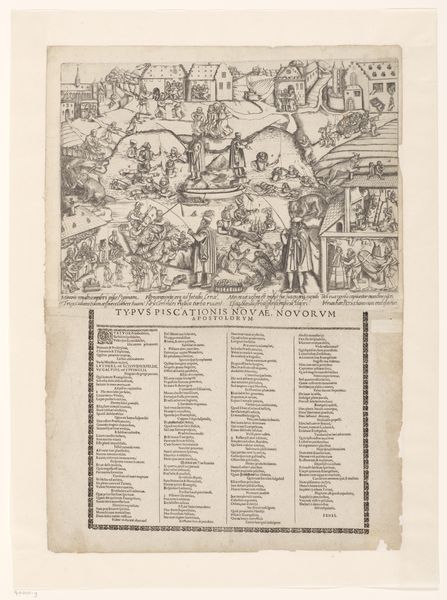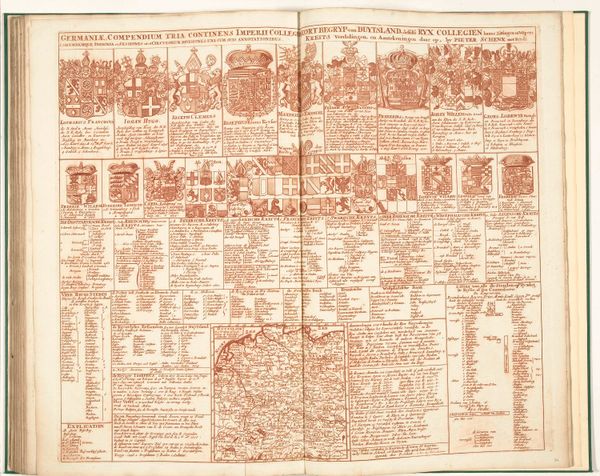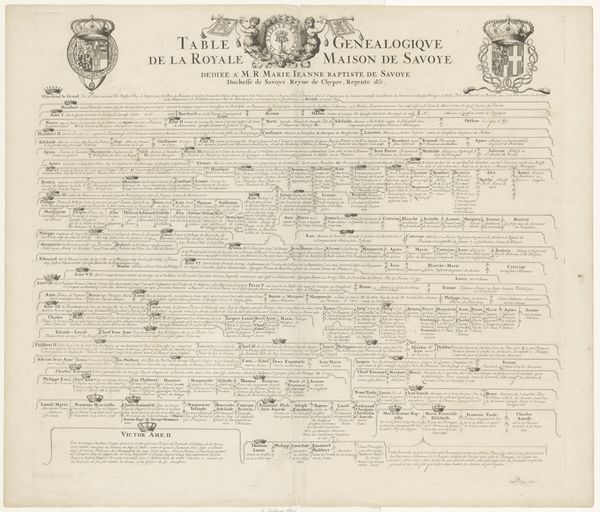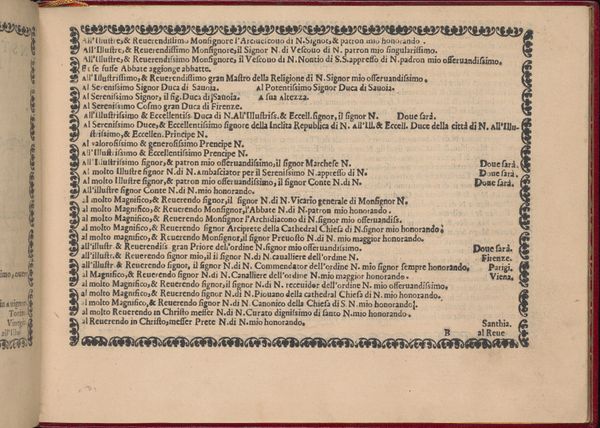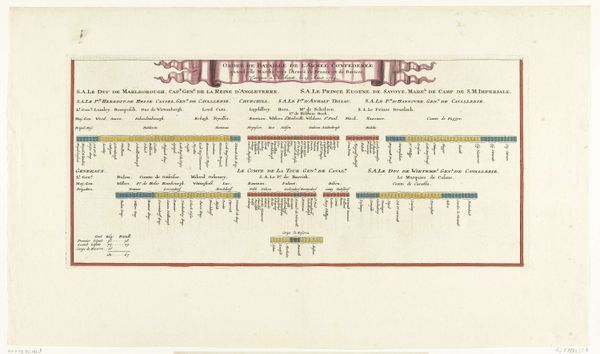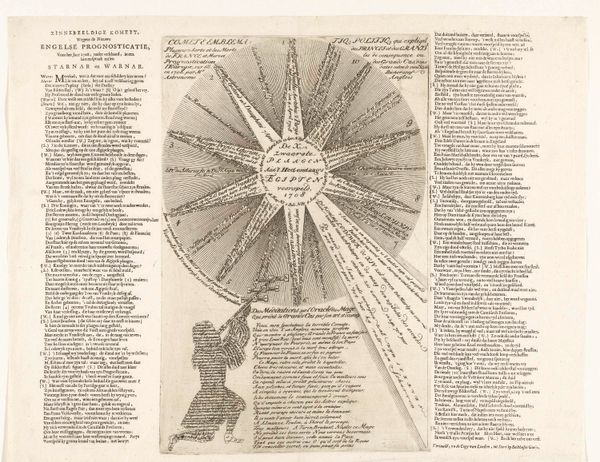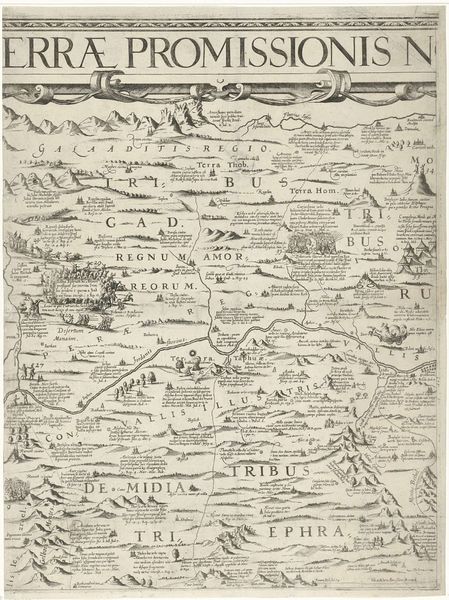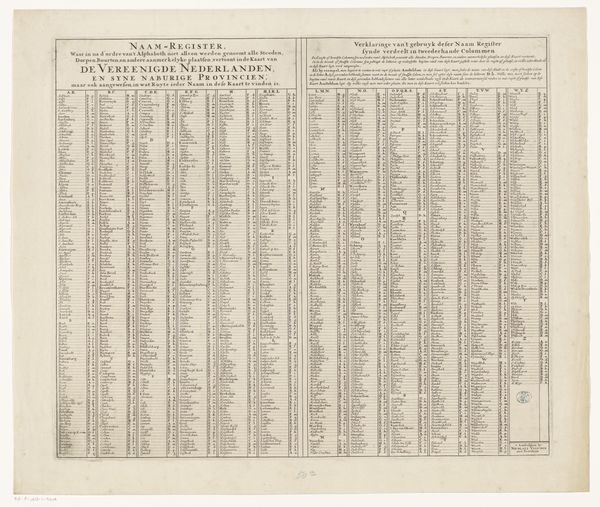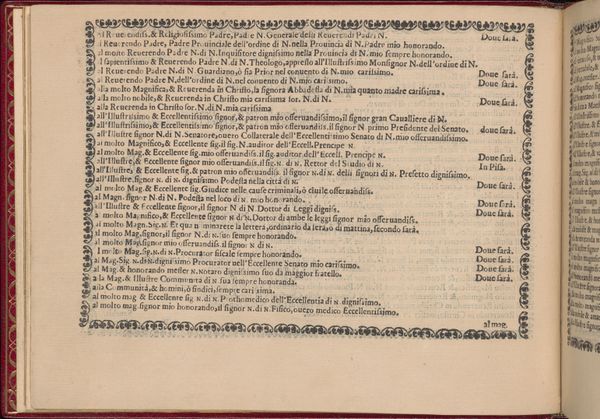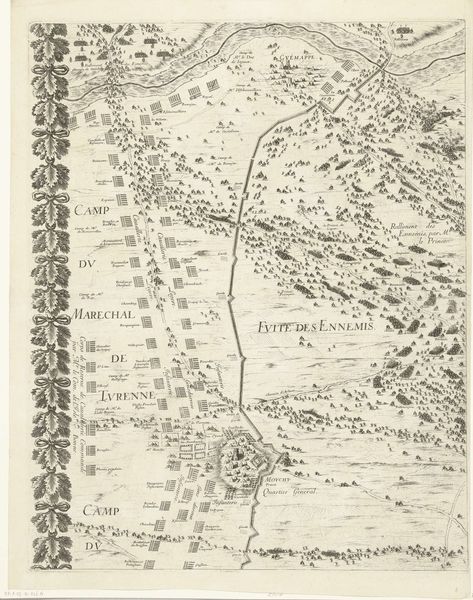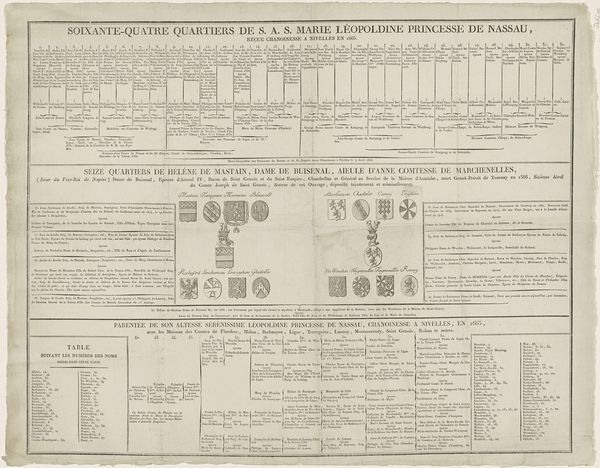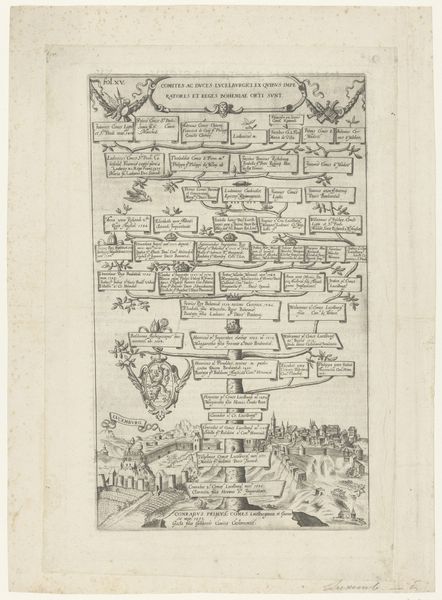
Speculum Romanae Magnificentiae: Tablet with Calendar from the Farnese Palace 1565 - 1585
0:00
0:00
drawing, print, paper, engraving
#
drawing
# print
#
paper
#
geometric
#
italian-renaissance
#
engraving
Dimensions: sheet: 10 1/4 x 16 7/16 in. (26 x 41.7 cm)
Copyright: Public Domain
Curator: This striking print, titled "Speculum Romanae Magnificentiae: Tablet with Calendar from the Farnese Palace," comes to us from sometime between 1565 and 1585, crafted by an anonymous artist. Look at this—a bewildering, meticulous matrix of letters and architectural instruments. It is now housed at the Metropolitan Museum of Art. Editor: Bewildering is right! It has this feeling of a code—an obscure language or system that demands deciphering. Almost unsettlingly precise and rational. Curator: Precisely! "Speculum Romanae Magnificentiae," meaning "Mirror of Roman Magnificence," was a project aiming to document ancient Roman monuments and artifacts. The Farnese Palace, a symbol of power, connects to Rome’s rich heritage. This specific tablet shows how the grandeur of Roman architecture intertwines with the era's fascination for geometry and measurement. Editor: And what about those… imperfections? The cracks running through it seem deliberate, part of its truthfulness. To me, those fissures also symbolize the fragile link to the past, a visible testament to time. Curator: Absolutely. Notice the drafting instruments, the compasses – symbols of precision, human knowledge, and control over the environment during the Renaissance. Those lines are quite potent symbols—they indicate the era's drive to systematize and comprehend its world, both architecturally and intellectually. Editor: They imply the artist sees order behind the apparent decay and illegibility… a determined quest for rational knowledge, amidst the fragmented reality of history. Are the apparent calendars also somehow coded representations? Curator: It could also be an administrative grid, documenting daily tasks or payments within the Farnese Palace. The repetition suggests not pure decoration, but utilitarian purpose repurposed for "magnificence" after the fact. Its emotional weight then lies in its depiction of both administrative logic and ambition toward magnificence. Editor: Yes, a reminder that even beauty and power have a concrete, quantifiable foundation, as every stone of the Palace needed calculating, and documenting. Something strangely moving in that paradox… Curator: Precisely. The image carries these nuances, intertwining the conceptual with the tangible realities of cultural and political authority. Editor: Reflecting on this, the print echoes the spirit of Renaissance exploration—both geographical and intellectual. Thanks! Curator: Indeed. It encapsulates the era's ambitions in one seemingly simple image, and shows an age unafraid to look back.
Comments
No comments
Be the first to comment and join the conversation on the ultimate creative platform.
